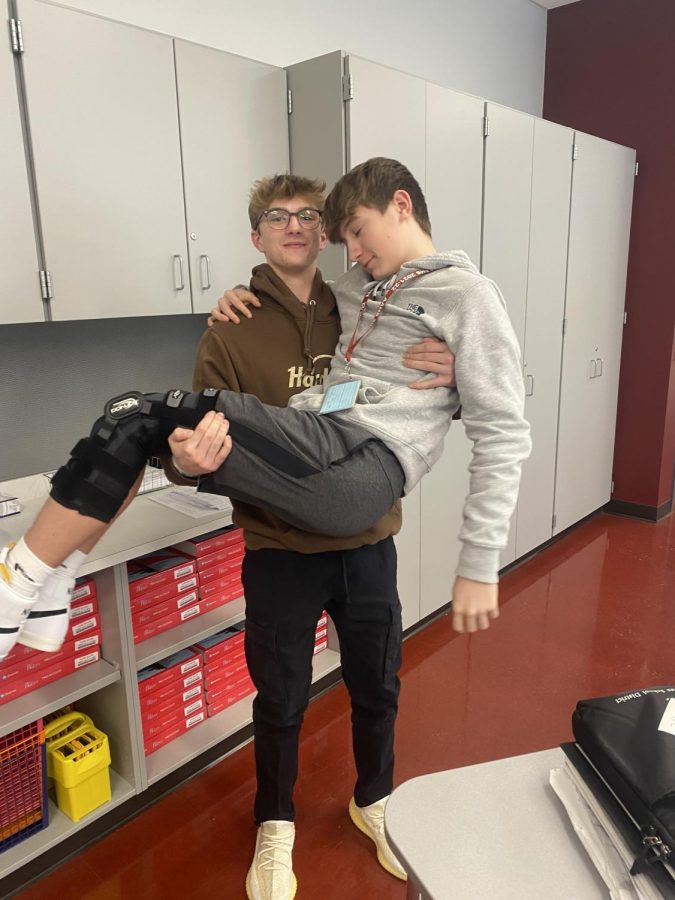Injured students express feelings on getting through hallways
Ouch. Freshman William Sankey expresses his injury by making freshman Aaron Smearman carry him.
January 21, 2022
According to some students, getting through the halls as an injured student can be a struggle, but students have found ways to help them. Whether it be leaving class a few minutes early or taking the elevator, they have managed to work around being injured.
Freshman Annabella Fanelli bruised the bones in her foot from a tumbling incident where she hit her foot off of the bar. She had to adjust to new ways of getting around school, but eventually, she got back into her routines.
“It took me a really long time to get around the school. I left a couple minutes before five minutes because it took way more than 10 minutes to get to my classes,” Fanelli said.
Junior Kaitlyn Ventre had a stress fracture in the left side of her back and a pars defect in her bottom vertebrae. Ventre’s injury was caused by dancing.
“It only affected me for the first few days because after I stopped dancing because any activity other than dancing I technically wasn’t supposed to do. The reason I went to the doctor was because it was getting worse. It was difficult to walk and because I didn’t go to the doctor’s and I didnt have a pass or anything like that, I just kind of had to deal with it. The only issue I really had was getting to class on time because the five minutes was not enough time,” Ventre said.
The injuries between the students were different but the students report that the difficulty of getting through the hall remained the same between them.
”When I was not in a class [in the hallway] when the bell rang and when people would form a line when they were walking with people. Normally you can just squeeze and turn sideways and walk past them, but if you’re on crutches, you can’t do that,” Fanelli said.
”These halls are busy. They’re fast paced, there’s lots of people moving in many different directions. When you’re focused on something else, in my case it wasn’t that bad, I was able to deal with it. But thinking of someone on crutches because being on crutches and wheelchairs makes it much more difficult. The fast paced environment of the school and having difficulty moving through the halls with a bunch of people moving fast in different ways was probably the most difficult thing. I could walk fine once I started moving but when I sit like this for a while at my desk, it puts a different kind of pressure on my spine then when I stand up. It hurt to move and my muscles were like ‘this is weird’ but once I got moving it was better. The hard part was getting started moving and getting out of the classroom,” Ventre said.
To make the school more accessible to injured students, the girls had some suggestions to make it easier.
”Keep better tabs on who rides the elevator. Sometimes I would stand at the elevator for 10 minutes and people would just get off and they didn’t have elevator passes. I would be late to class because people wanted to ride the elevator for fun,” Fanelli said
”Definitely allowing students to leave with enough time. If you need excess time to get from place to place walking in empty halls helps so much. These halls are busy and some people get mad, I get mad, when people are walking slowly. As long as the student isn’t abusing the power and roaming the halls during class, the extra time helps,” Ventre said.









